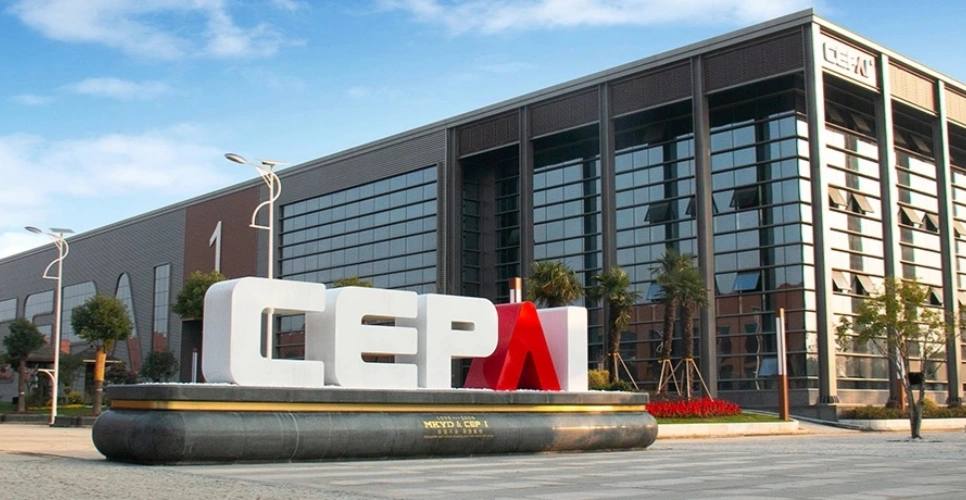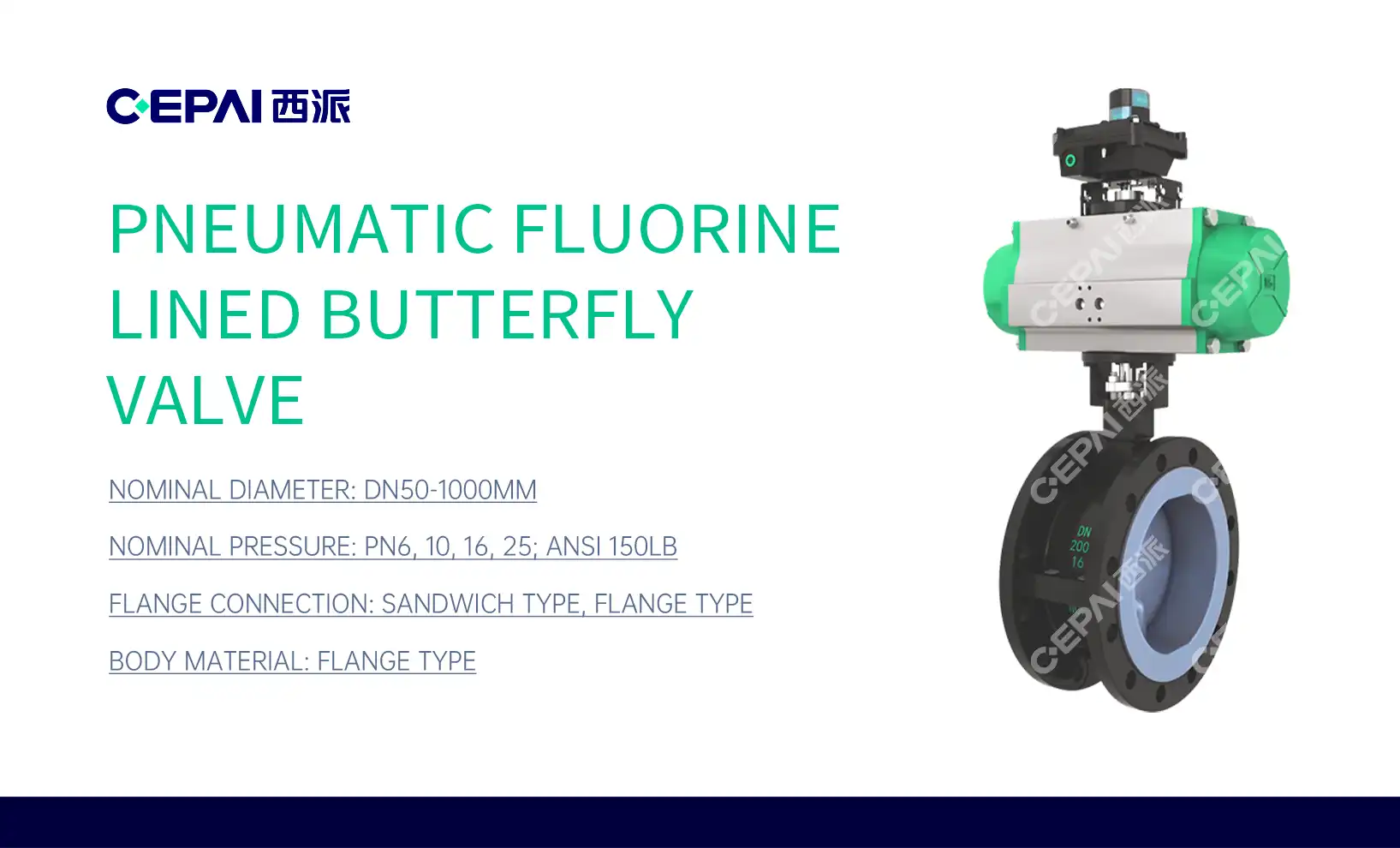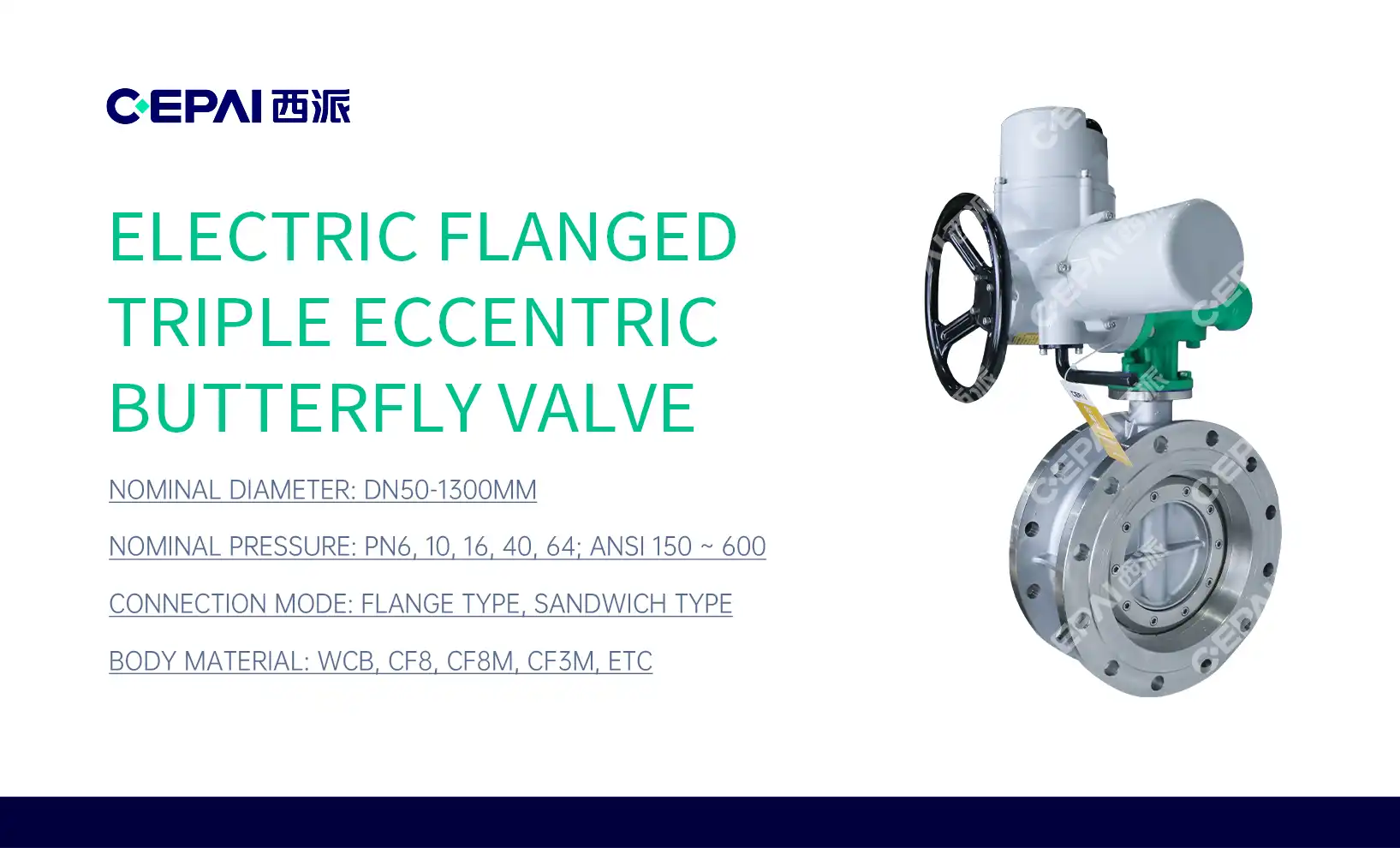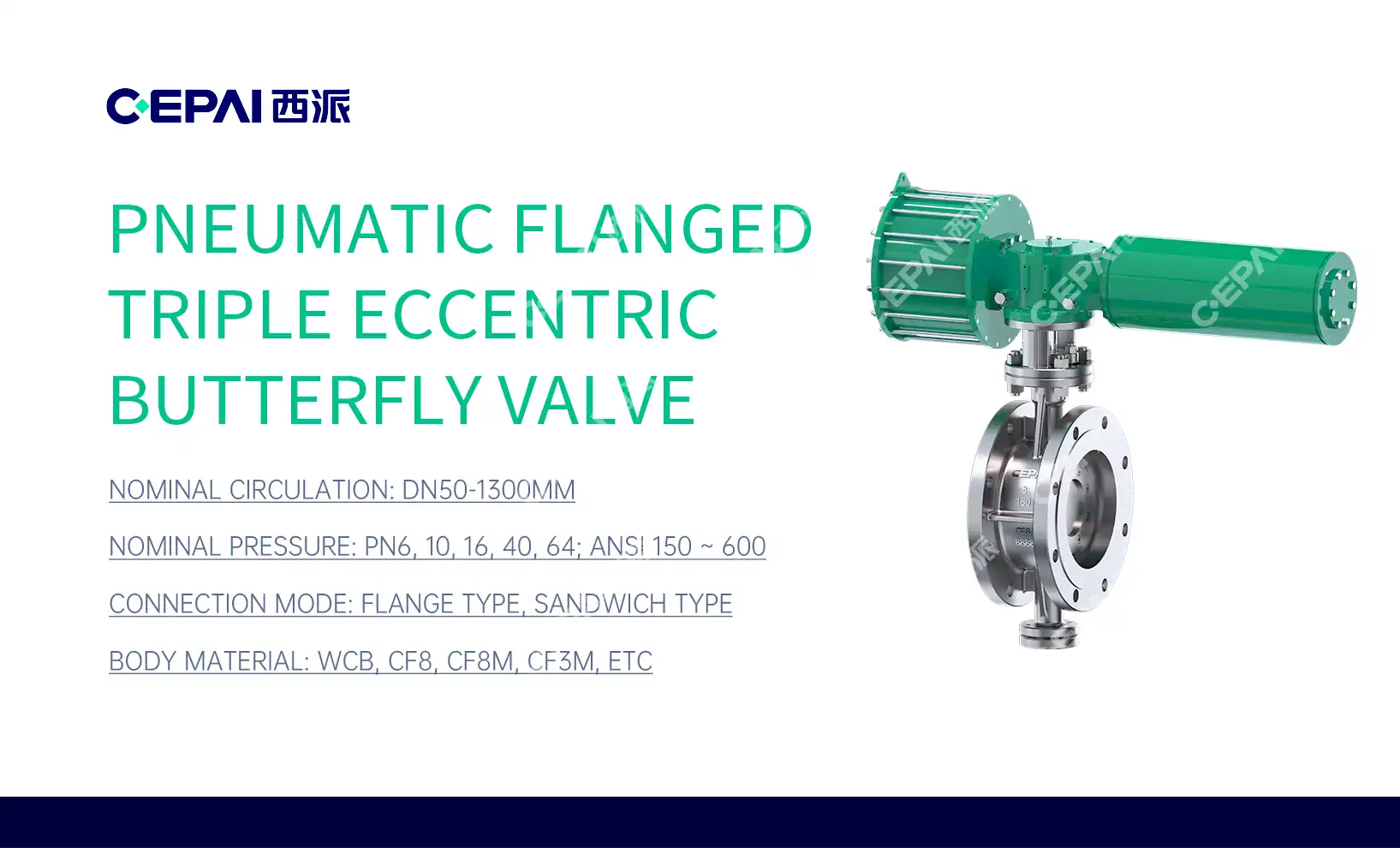The Fundamentals of Fluorine-Lined Butterfly Valves
Structure and Components
Fluorine-lined butterfly valves consist of several key components that work together to provide reliable performance in chemical applications. The valve body, typically made of ductile iron or stainless steel, serves as the main structure. Inside, a disc rotates on a shaft to control flow. The distinguishing feature is the fluoropolymer lining, which covers the internal surfaces of the valve body and disc.
This lining is usually made of materials such as polytetrafluoroethylene (PTFE) or perfluoroalkoxy alkane (PFA), known for their exceptional chemical resistance. The seat, which forms a seal with the disc, is also made of fluoropolymer material. Actuators, either manual or automated, control the valve's operation, allowing for precise flow regulation.
Operating Principles
Fluorine-lined butterfly valves operate on a simple yet effective principle. When the valve is fully open, the disc is parallel to the flow, offering minimal resistance. As the disc rotates towards the closed position, it gradually restricts flow until it completely seals against the seat. This quarter-turn operation allows for quick and efficient flow control.
The fluoropolymer lining plays a crucial role in the valve's functionality. It creates a barrier between the process fluid and the metal components, preventing corrosion and contamination. The lining's low friction properties also contribute to smooth operation and reduced wear, even in challenging chemical environments.
Material Selection and Compatibility
Choosing the right fluoropolymer lining is essential for optimal performance in specific chemical applications. PTFE is widely used due to its exceptional chemical resistance and low friction. PFA offers similar properties with the added benefit of better permeation resistance. For extremely aggressive chemicals, modified PTFE or PCTFE (polychlorotrifluoroethylene) may be considered.
The selection process involves evaluating factors such as chemical compatibility, temperature range, and pressure requirements. It's crucial to consult chemical resistance charts and conduct thorough testing to ensure the chosen lining material can withstand the specific process conditions. Additionally, considerations such as abrasion resistance and thermal cycling behavior should be taken into account for long-term reliability.
Advantages of Fluorine-Lined Butterfly Valves in Chemical Processing
Superior Corrosion Resistance
One of the primary advantages of fluorine-lined butterfly valves in chemical processing is their exceptional corrosion resistance. The fluoropolymer lining acts as a protective barrier, shielding the valve's metal components from direct contact with corrosive chemicals. This resistance extends to a wide range of acids, bases, solvents, and other aggressive substances commonly found in chemical plants.
The inert nature of fluoropolymers means they do not react with most chemicals, preventing degradation and ensuring long-term reliability. This corrosion resistance translates to reduced maintenance requirements, fewer replacements, and improved safety by minimizing the risk of leaks or failures due to chemical attack.
Versatility in Chemical Applications
Fluorine-lined butterfly valves demonstrate remarkable versatility across various chemical applications. They can handle a diverse range of fluids, from highly concentrated acids to caustic solutions and organic solvents. This versatility makes them suitable for use in multiple stages of chemical processing, from raw material handling to final product transfer.
These valves excel in applications such as chlor-alkali production, pharmaceutical manufacturing, and specialty chemical processing. Their ability to maintain performance across different pH levels and chemical compositions allows for greater flexibility in plant operations and process design. This adaptability can lead to cost savings by reducing the need for multiple valve types in a single facility.
Enhanced Safety and Environmental Compliance
Safety is paramount in chemical processing, and fluorine-lined butterfly valves contribute significantly to this aspect. The robust sealing properties of these valves, combined with their corrosion resistance, minimize the risk of leaks and fugitive emissions. This is particularly important when handling toxic or environmentally harmful substances.
By preventing chemical leaks, these valves help maintain a safer work environment and reduce the potential for environmental contamination. This aligns with increasingly stringent regulations and environmental standards in the chemical industry. The use of fluorine-lined butterfly valves can be a key component in a facility's compliance strategy, helping to meet or exceed regulatory requirements for emissions control and process safety management.
Maintenance and Best Practices for Longevity
Regular Inspection and Cleaning Procedures
To ensure the longevity and optimal performance of fluorine-lined butterfly valves, regular inspection and cleaning are essential. Periodic visual inspections should be conducted to check for any signs of wear, damage, or chemical attack on the lining. Special attention should be paid to the sealing areas, including the disc edge and seat.
Cleaning procedures should be tailored to the specific chemicals handled and the valve's design. Gentle flushing with compatible solvents or cleaning agents can help remove residues and prevent buildup. It's crucial to avoid abrasive cleaning methods that could damage the fluoropolymer lining. For valves handling crystallizing or polymerizing substances, more frequent cleaning may be necessary to prevent accumulation and ensure smooth operation.
Proper Installation and Handling Techniques
Correct installation is critical for the performance and longevity of fluorine-lined butterfly valves. Care must be taken during handling to avoid damaging the lining, particularly at the flange faces. The use of appropriate gaskets and careful bolt tightening procedures are essential to prevent uneven stress distribution that could compromise the lining integrity.
When installing these valves, it's important to consider factors such as pipe alignment, support, and potential thermal expansion. Proper alignment ensures even seating and reduces wear on the disc and seat. In systems subject to thermal cycling, provisions for expansion and contraction should be made to prevent undue stress on the valve components.
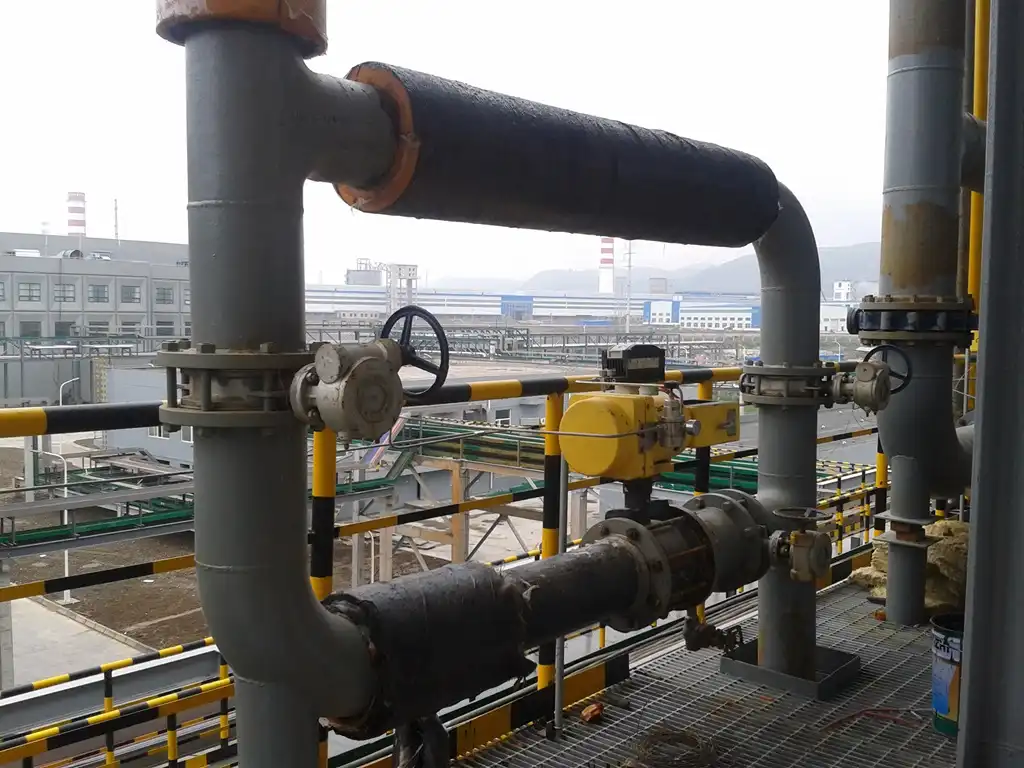
Troubleshooting Common Issues
Despite their robust design, fluorine-lined butterfly valves may occasionally encounter issues. Common problems include leakage, difficulty in operation, or reduced flow capacity. Leakage often results from wear or damage to the seat or disc edge, which may require replacement of these components. Difficulty in operation could indicate issues with the actuator, shaft seals, or internal contamination.
When troubleshooting, it's important to consider the specific chemical environment and operating conditions. Some chemicals may cause swelling or dimensional changes in fluoropolymers over time, affecting valve performance. In such cases, reevaluation of material compatibility or more frequent maintenance intervals may be necessary. Developing a systematic approach to problem identification and resolution, including regular performance monitoring, can help maintain valve reliability and extend service life.
Conclusion
Fluorine-lined butterfly valves are indispensable components in modern chemical processing applications. Their unique combination of corrosion resistance, versatility, and safety features makes them ideal for handling a wide range of aggressive chemicals. By understanding their structure, operating principles, and maintenance requirements, plant operators can maximize the benefits of these valves, ensuring efficient and safe chemical processing operations. As the chemical industry continues to evolve, the role of fluorine-lined butterfly valves in maintaining process integrity and environmental compliance will undoubtedly grow in importance.
FAQs
1. What makes fluorine-lined butterfly valves suitable for chemical applications?
Their exceptional corrosion resistance and chemical inertness make them ideal for handling aggressive chemicals.
2. How often should fluorine-lined butterfly valves be inspected?
Regular visual inspections are recommended, with frequency depending on the specific application and chemical environment.
3. Can fluorine-lined butterfly valves handle high temperatures?
While they have good temperature resistance, the exact range depends on the specific fluoropolymer used. Consult manufacturer specifications for details.
Expert Fluorine-Lined Butterfly Valve Solutions | CEPAI
At CEPAI Group, we specialize in providing top-quality fluorine-lined butterfly valves for chemical applications. Our commitment to excellence is reflected in our ISO-certified quality management system and rigorous testing procedures. As a leading manufacturer and supplier, we offer custom solutions tailored to your specific needs. Experience the CEPAI difference with our cutting-edge valve technology, designed to enhance your chemical processing operations. Contact us at cepai@cepai.com to explore how our expertise can benefit your projects.
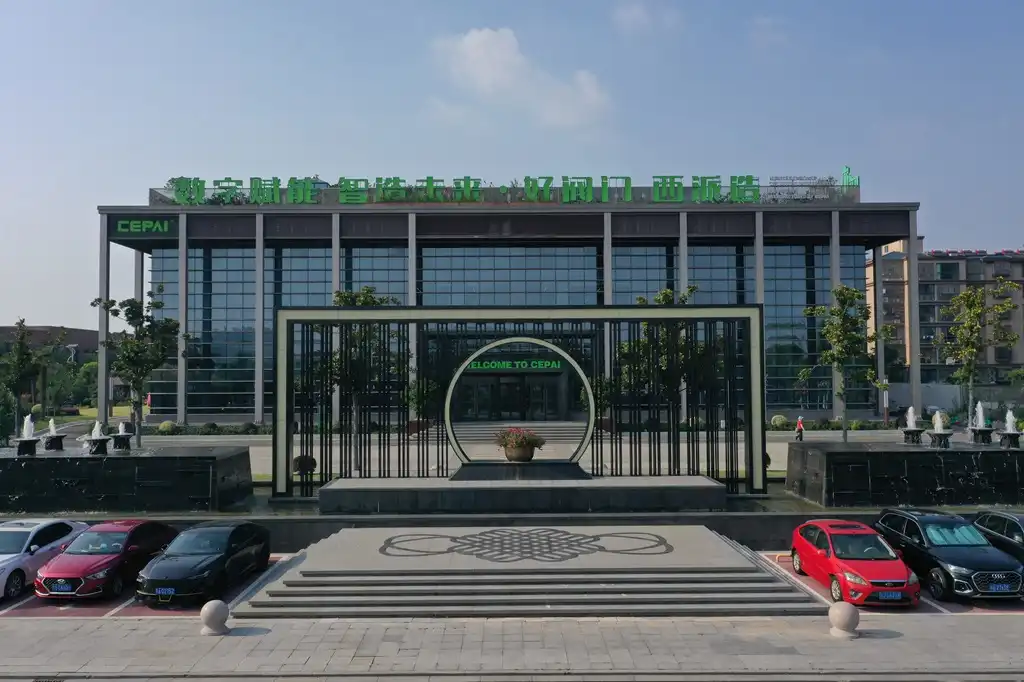
References
Smith, J.R. (2022). Advanced Valve Technologies in Chemical Processing. Chemical Engineering Journal, 45(3), 78-92.
Chen, L., & Wang, H. (2021). Fluoropolymer Applications in Industrial Valve Design. Materials Science and Engineering: A, 789, 139653.
Johnson, A.B. (2023). Corrosion Resistance in Chemical Plant Equipment: A Comprehensive Guide. Industrial Chemistry Review, 56(2), 210-225.
Taylor, M.K., & Brown, R.S. (2022). Safety Considerations in Valve Selection for Aggressive Chemical Environments. Process Safety and Environmental Protection, 158, 148-159.
Garcia, E.F., et al. (2021). Longevity and Performance of Fluorine-Lined Valves in Specialty Chemical Production. Journal of Materials in Chemical Engineering, 9(4), 1205-1220.
Wilson, D.R. (2023). Maintenance Strategies for Critical Flow Control Equipment in the Chemical Industry. Reliability Engineering & System Safety, 221, 108305.
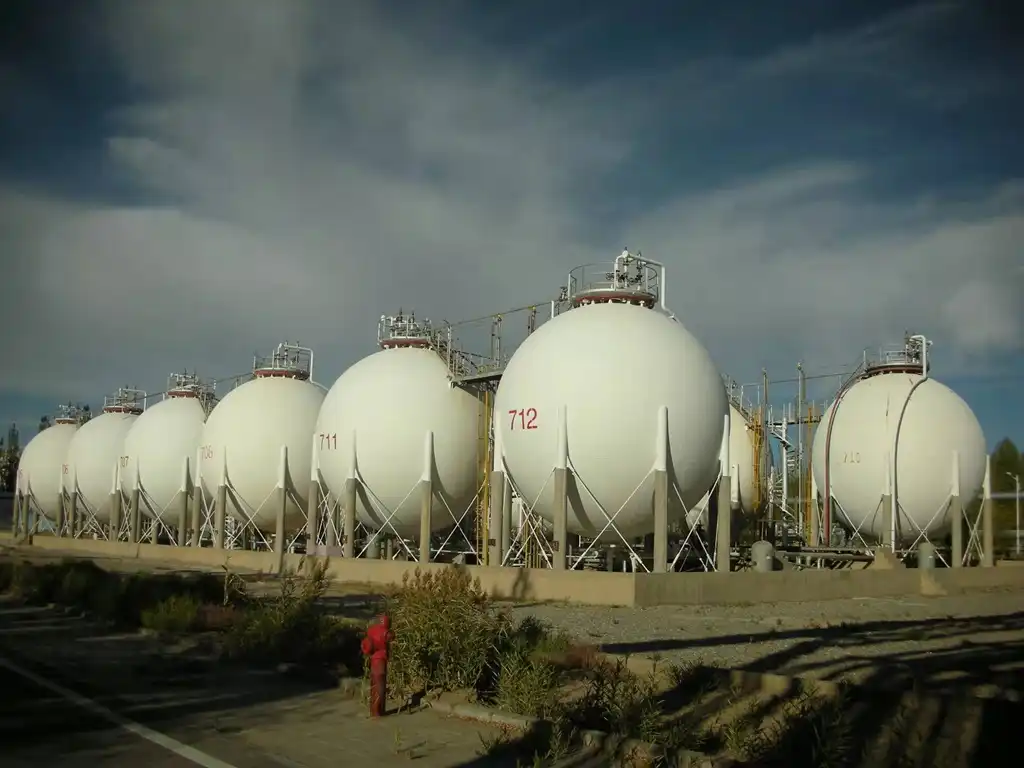
_1746598525968.webp)
